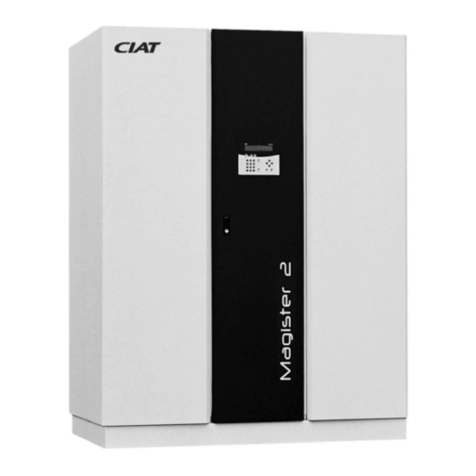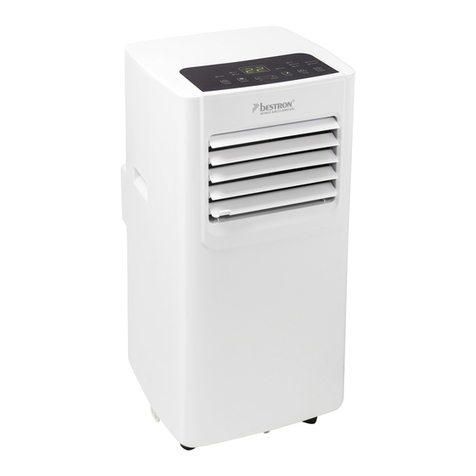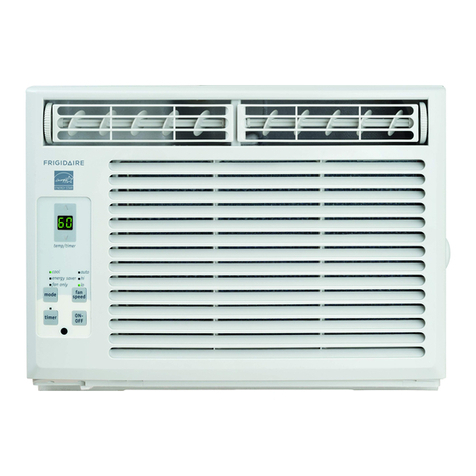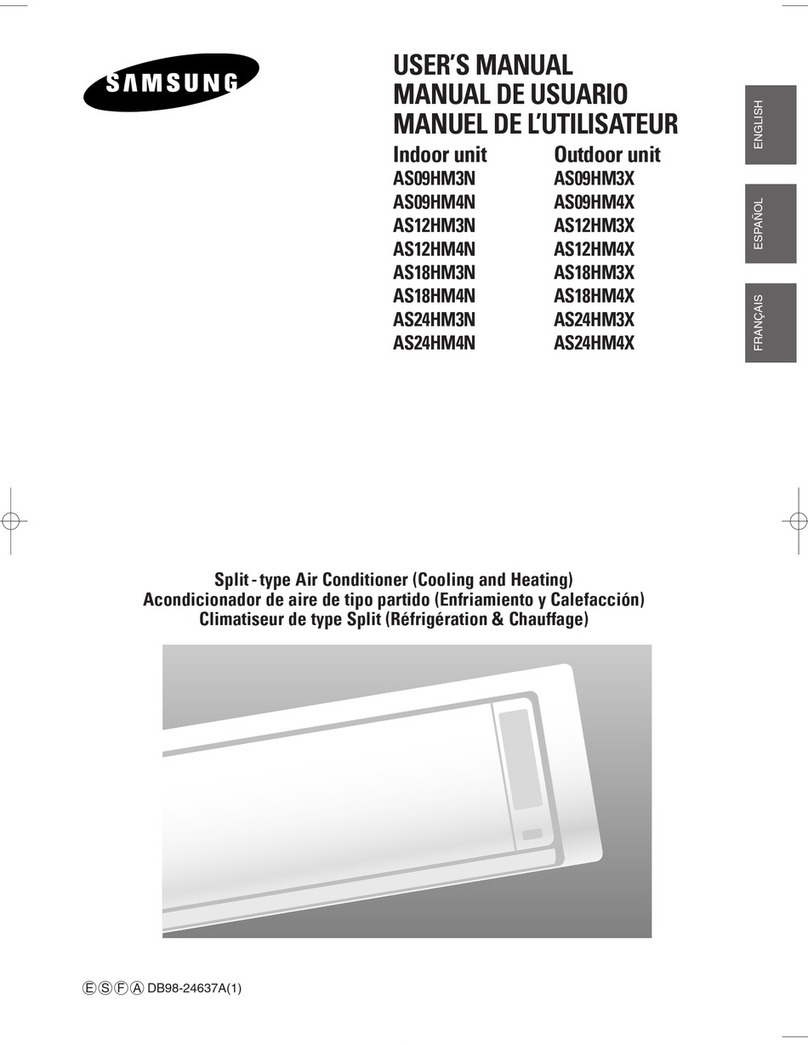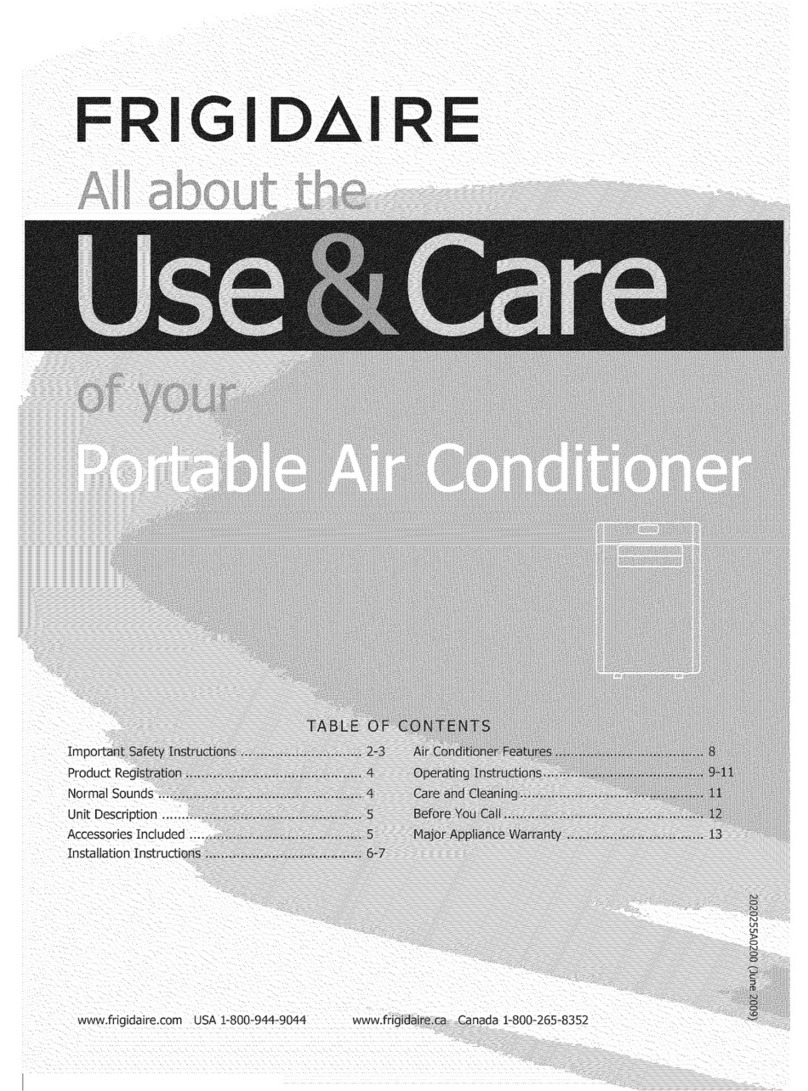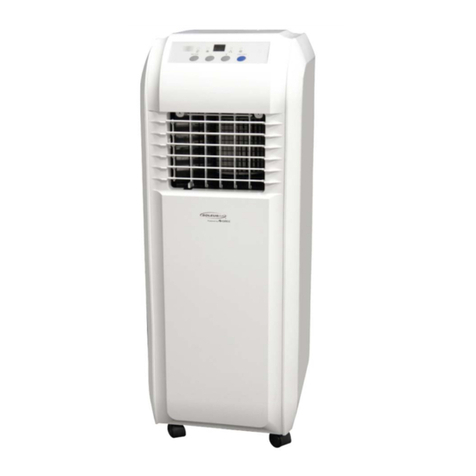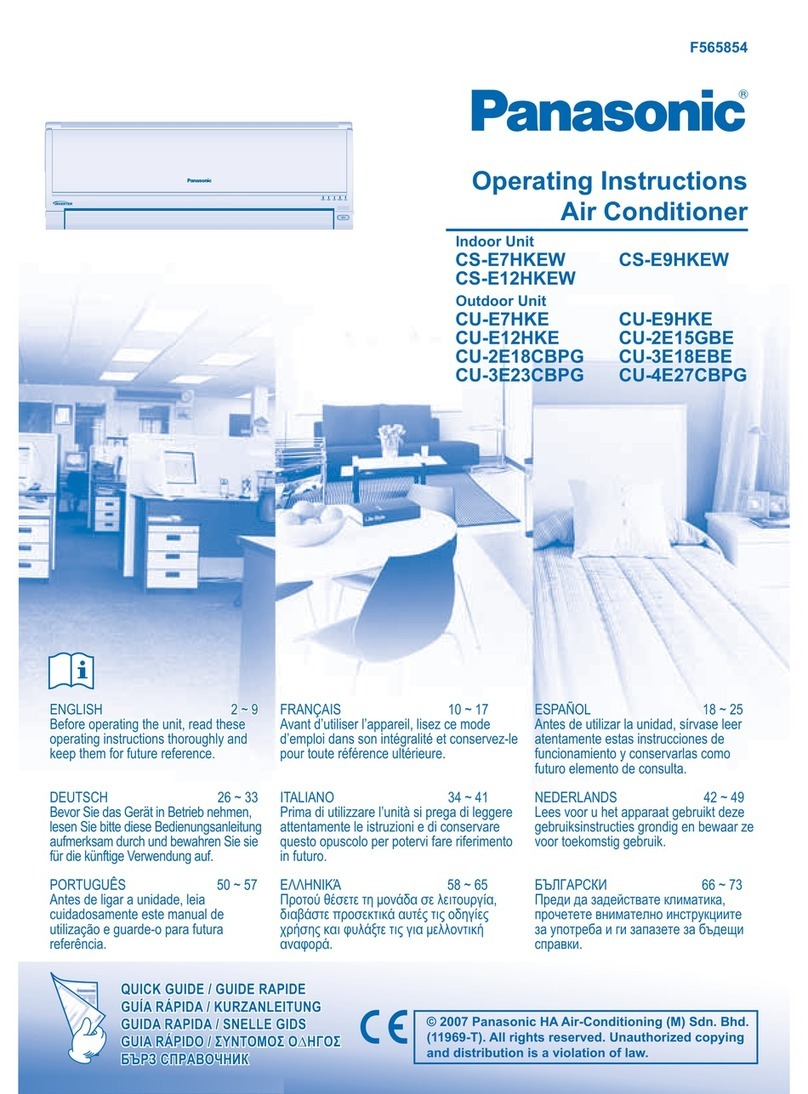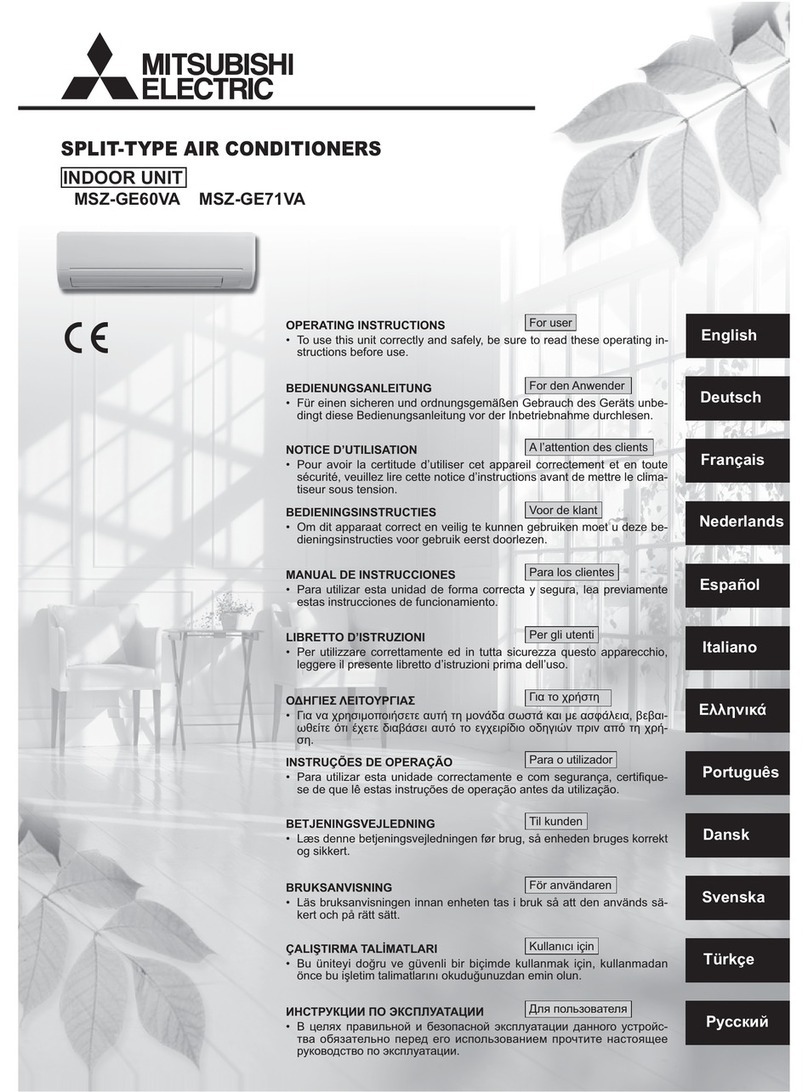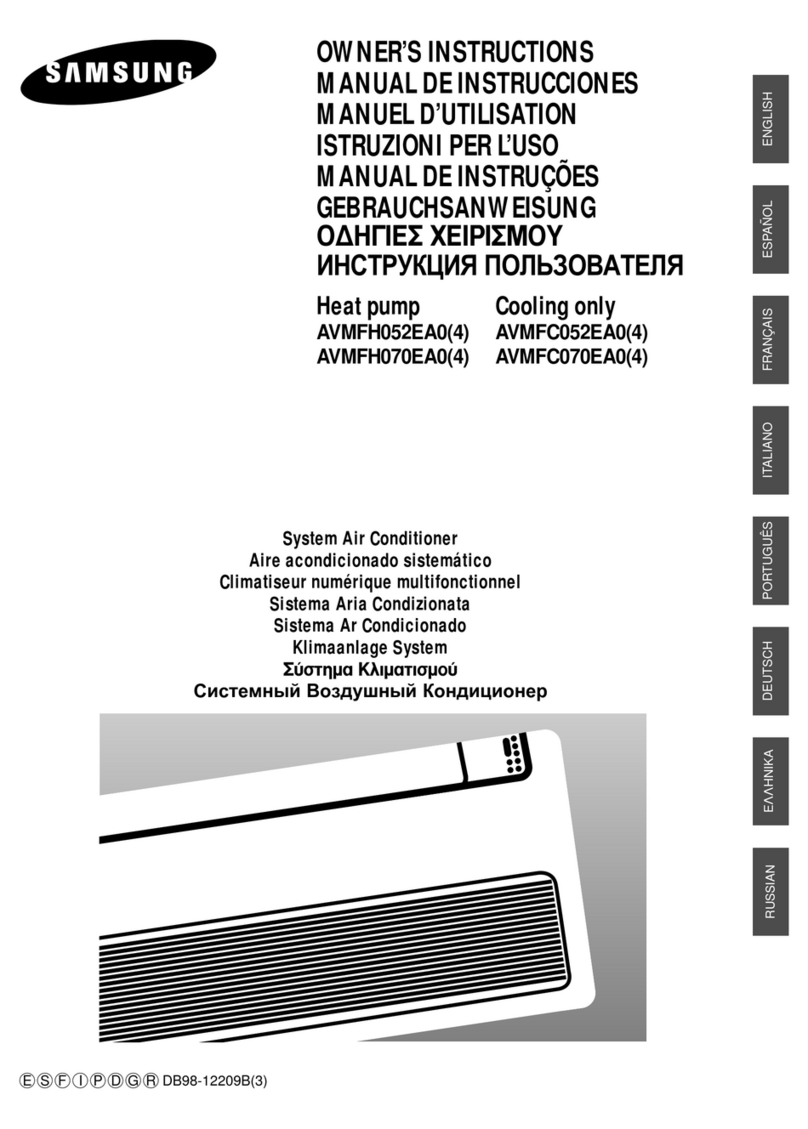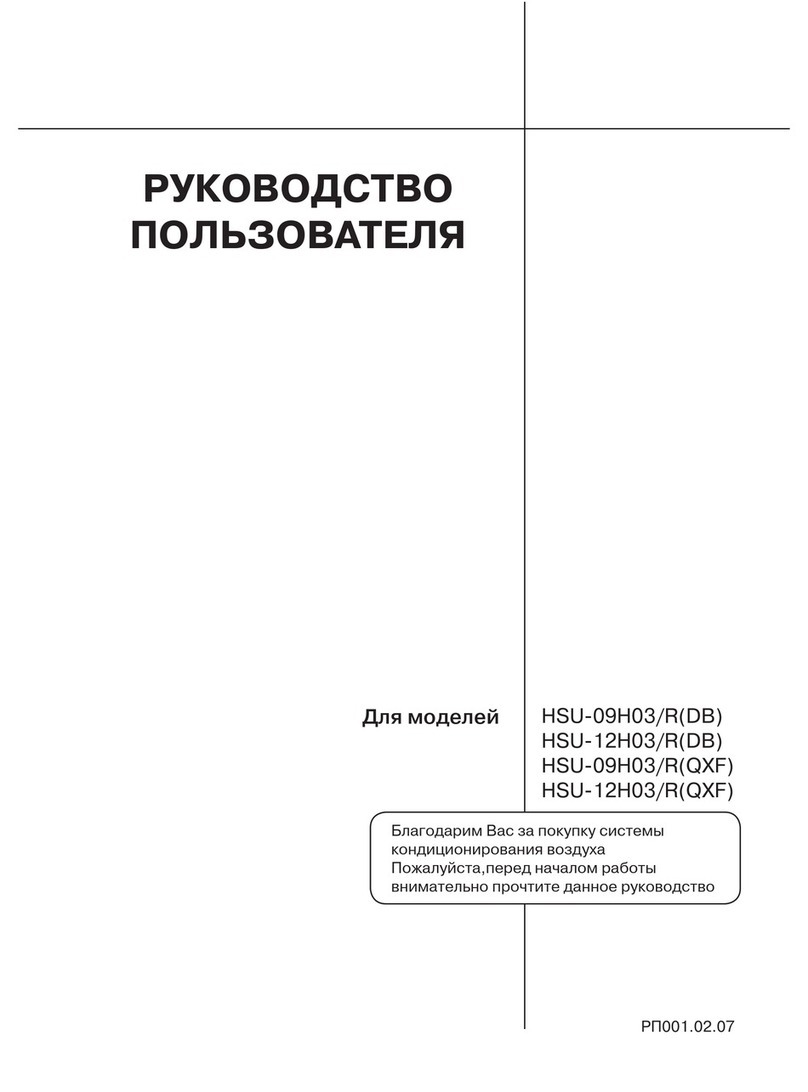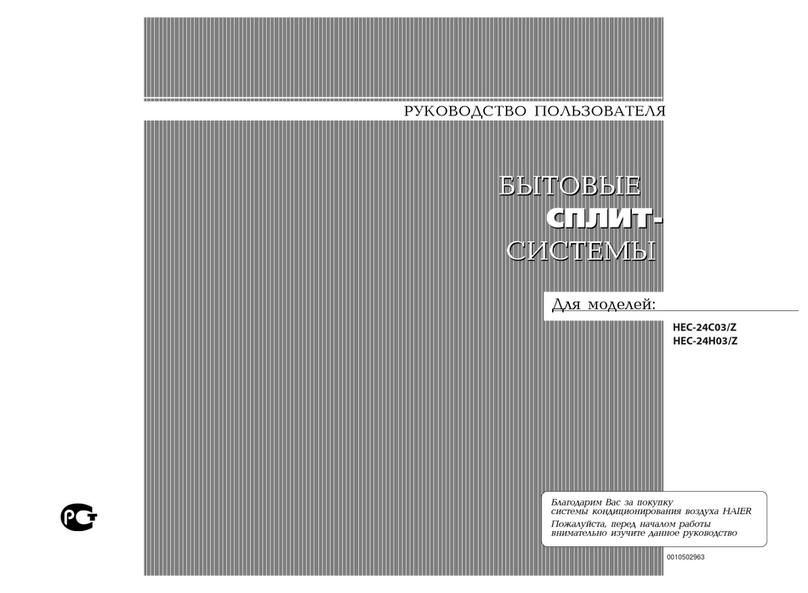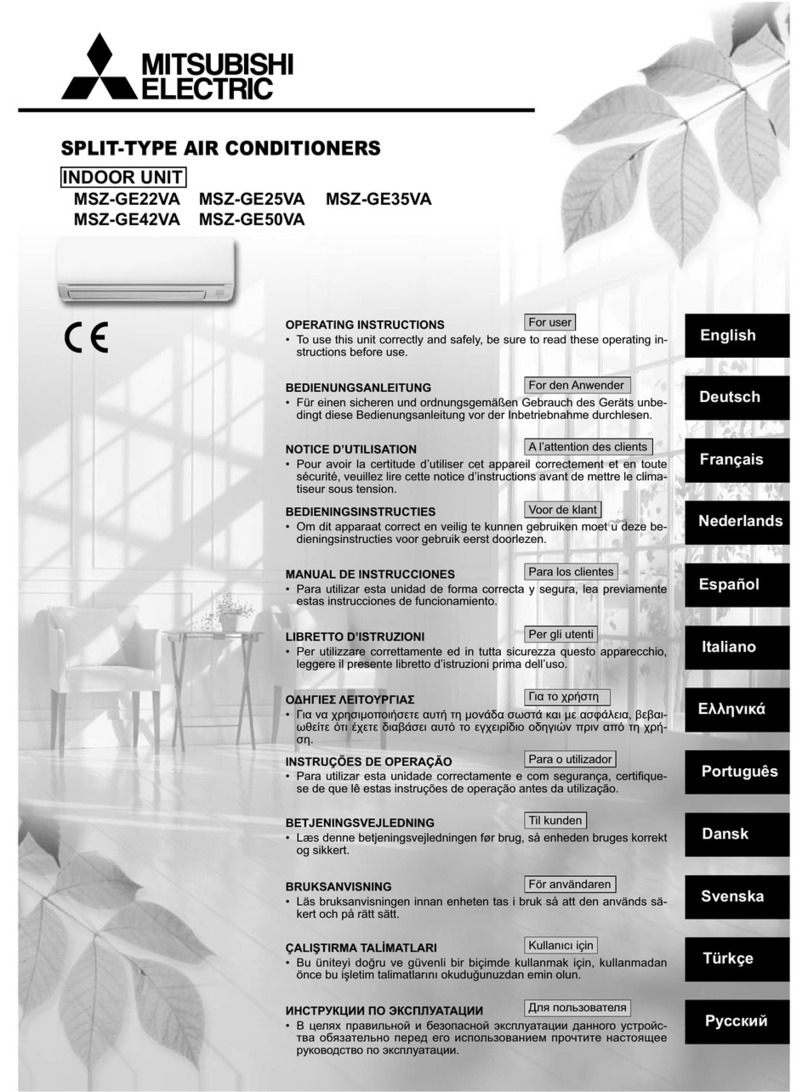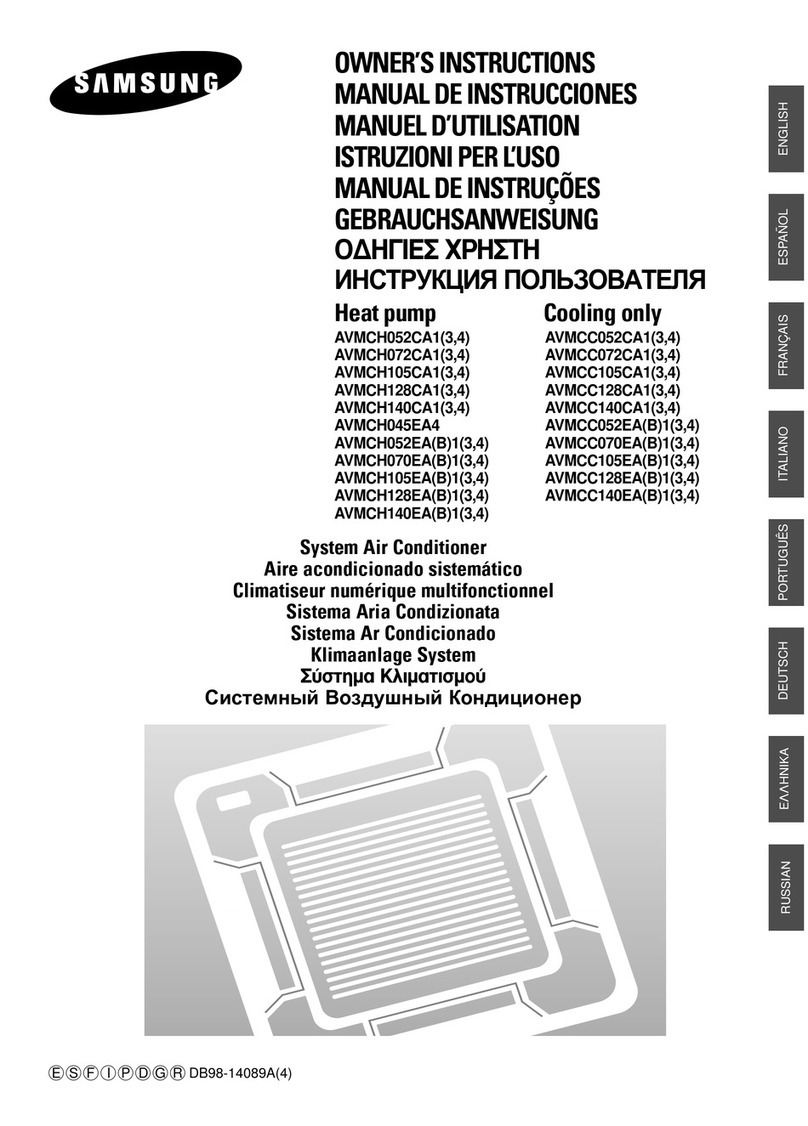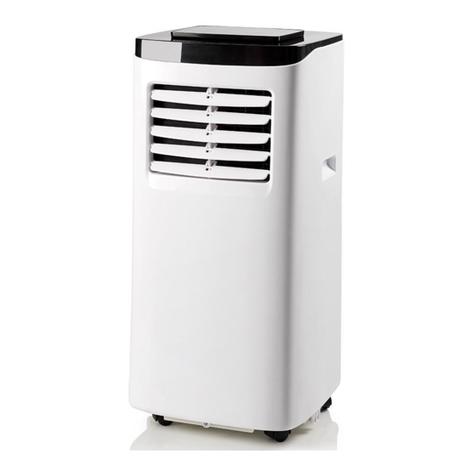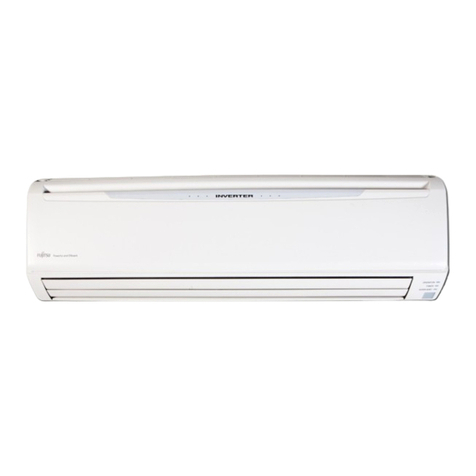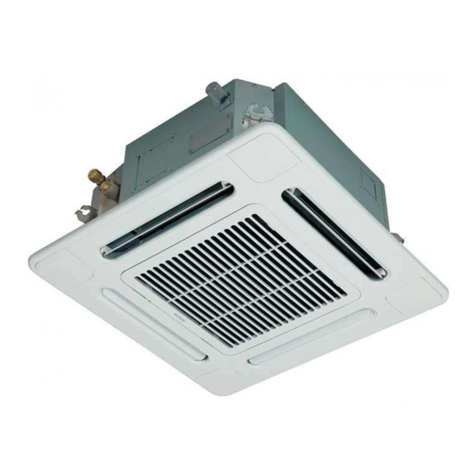
3
1.1 WARNINGS FOR USERS
-The split air conditioner is only designed for climate control in indoor environments
with surface areas and conditions of use appropriate for the installed capacity.
Never use it for other purposes.
-The air conditioner is designed to be used by experts or trained persons in shops,
industries or on farms, or by normal users for commercial use.
-Check that the accessories are included in the indoor unit.
-The air conditioner may only be installed, plumbed in and wired by persons who
meet the technical and professional requirements to install and maintain such
systems.
-Ensure that the appliances are not accessible by disabled persons or children
-This type of indoor unit does not use an electric heater. You cannot install an
electric heater or an electric stove at the installation site.
-Do not place objects of any kind inside the indoor unit.
-Do not remove the protective grilles or insert hands or objects into the sockets or
where the air comes through.
-Do not block the entrances to the air inlets and outlets. Doing so will significantly
reduce the heating and cooling capacity.
-Do not place objects on the outdoor unit or climb over it.
-Periodically check the conditions of installation of the unit. Have the system
checked by qualified personnel.
-Do not remove the power cable while the unit is running or with wet hands. Doing
so risks electric shocks and fires.
-In the event that the power cable is damaged, it must be replaced. Use a type of
cable featured in the manual only. The cable must be replaced by trained,
qualified personnel only.
-Do not pull, stretch or deform the power cable in any way. Doing so may damage
the unit or cause an electric shock.
-After switching on the air conditioner, do not switch it off for at least 5 minutes.
This prevents oil from returning to the compressor.
-Do not use liquid detergents or corrosive products to clean the air conditioner.
These may cause damage or electric shocks.
-Do not use any sprays or insecticides on the units. Doing so could result in a fire.
-Do not modify the units. Do not attempt to repair the units yourself. Any incorrect
or unsuitable intervention may result in fires, electric shocks or leakage of water or
refrigerant.
-Do not drop the remote control. Do not use sharp objects to press the buttons.
Doing so could damage the remote control.
-Close doors and windows while the air conditioner is running. Otherwise it is
impossible to achieve effective temperature control.
-Adjust the temperature properly to achieve a comfortable environment. Make sure
the temperature in the environment is appropriate, especially in the presence of
bedridden elderly persons, children or disabled persons.
